
Hello everyone, I am the beloved Xiao Yueyue. In previous articles, we discussed “6 Must-Buy High-Performance Linux Development Boards in 2019 | OlinuXino Special” and “6 Must-Buy High-Performance Linux Development Boards in 2019 | BPI Special”.
Today, we will talk about another category of high-performance Linux development boards— BeagleBone and Cubie.

Xiao Yueyue Says
Today, Xiao Yueyue brought two series of boards, one is the BeagleBone series, focusing on industrial control applications, and the other is the Cubie series, which is more oriented towards traditional embedded multimedia applications. Whether you are an electronic veteran or a beginner, you should be able to find a suitable board for yourself in this article.
The BeagleBone series of development boards all use Texas Instruments processors, such as the TI AM3358. They are open source and particularly durable, allowing geeks to DIY various robots or CNC machines. I have seen a university using BeagleBone to create an underwater robot, which is said to be based on an open-source ROV project. Let’s get to the main characters of today.
BeagleBone Black
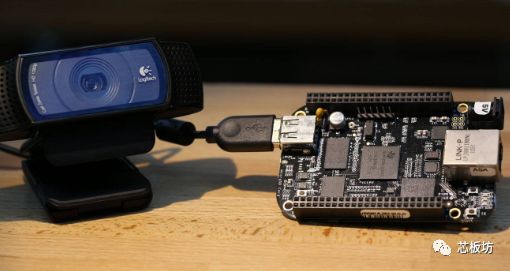
You may often hear some geek talk about something called BBB, which is not a pager, but an abbreviation for BeagleBone Black. BBB is a board aimed at open-source industrial applications, with numerous IO interfaces. Of course, its multimedia performance is not as good as the recent Raspberry Pi 3B, after all, it is an industrial product.
The processor of BeagleBone Black is the TI AM3358, a single-core Cortex-A8 with a frequency of 1GHz, equipped with a PRU programmable microcontroller. The GPU is a PowerVR SGX530 GPU. It has 512MB of RAM and 4GB eMMC flash storage. Some beginners may wonder, such a configuration looks low-end, what’s so good about it?
The reason is simple, it is energy-efficient and stable. It can be powered by just 1 watt without the need for a heat sink, has an industrial-grade working temperature range, and comes with a microcontroller unit, making the analog-to-digital conversion (ADC) and IO speeds fast. In contrast, the Raspberry Pi does not have ADC and its IO speed is also slower, requiring an additional microcontroller, which can be troublesome.
BBB has a very interesting open-source project called OpenROV, which is completely open source and can dive up to 100 meters. The resource address is as follows:
https://store.openrov.com/collections/diy-rovs-part/products/openrov-v2-8-kit
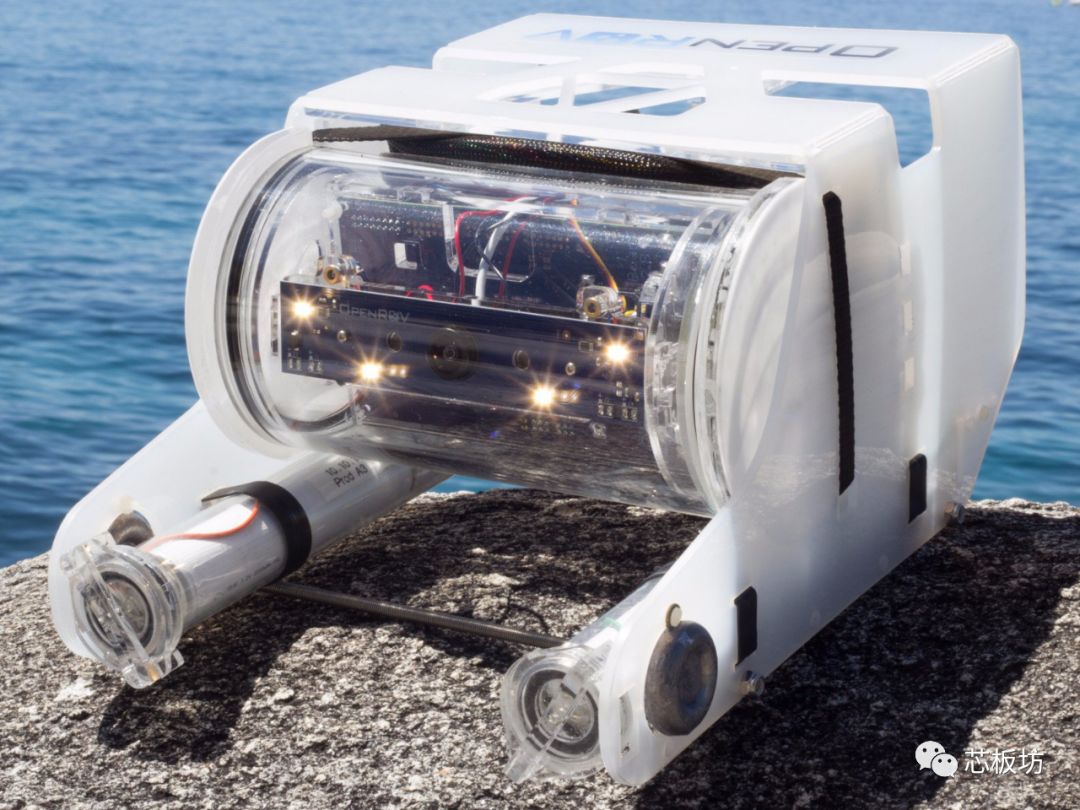
BeagleBone Blue
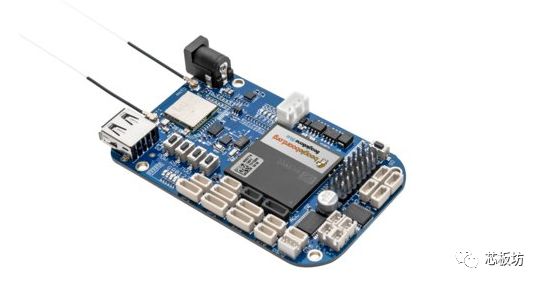
BeagleBone Blue is a blue version of BeagleBone. The biggest difference from BB Black is that BB Blue’s core chip is a highly integrated large chip (or large module), the OSD3358 SiP. This chip is impressive as it integrates the AM3358 processor, memory, and flash storage.
Since BB Blue is designed for robotics, it uses an industrial-grade integrated large chip OSD3358 SiP for stability, with built-in WiFi and Bluetooth, and 8 servo outputs, 4 DC motor outputs, and 4 encoder inputs. In terms of sensors, it comes with a three-axis gyroscope, three-axis accelerometer, three-axis magnetometer, and barometer. You may wonder, what kind of robot is this? Why are there so many complex sensors?
It is an aerial robot, the legendary drone. One of BB Blue’s firmware is the open-source flight control ArduPilot, which originally ran on Arduino Mega and now runs on BB Blue’s Linux system. It is truly amazing.
The open-source page for BB Blue’s Ardupilot flight control is here: https://github.com/mirkix/ardupilotblue
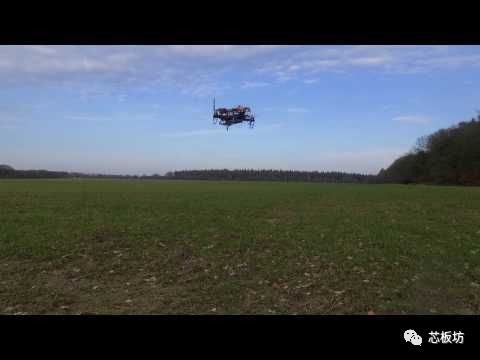
BeagleBone Green
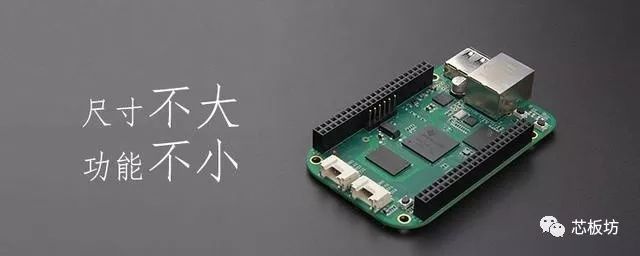
BeagleBone Green is a green version of BeagleBone. Compared to BB Black, it removes the HDMI and 5V power interfaces. Most engineers use BBB for industrial control, so HDMI is unnecessary. By removing useless interfaces, it reduces costs and increases stability.
BB Green is positioned for IoT control, removing unnecessary interfaces and adding Seeed’s Grove sensor interface. This way, you can quickly build a prototype of an IoT project using Seeed’s electronic building blocks.
BB Green still uses the AM3358 processor with 512MB of RAM and 4GB eMMC. If your IoT project does not require an Ethernet port but needs wireless connectivity, you can try the BeagleBone Green Wireless.
BB Green Wireless maintains the same specifications as BB Green while removing the Ethernet port and adding wireless networking capabilities, supporting 802.11n WiFi and Bluetooth 4.1. The original Ethernet port has been replaced by USB, bringing the total to 4 USB Type-A ports.
Cubie AIO-S700
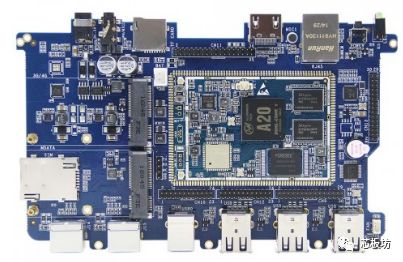
The processor of CubieBoard4 is Allwinner A80, a high-performance processor with a big.LITTLE architecture.
It has 4 Cortex-A15 big cores with a frequency of 2GHz and 4 Cortex-A7 small cores with a frequency of 1.3GHz. The GPU is PowerVR G6230. Memory specifications are 2GB DDR3 and 8GB eMMC flash storage.
From the photos, this board looks like a small HTPC motherboard, and its positioning is indeed for use as a living room TV box. Not to mention its 4 high-performance Cortex-A15 big cores with a frequency of up to 2GHz. Its PowerVR G6230 is a 64-core GPU that supports HD video playback and can run various big games. It can also serve as a high-performance gaming machine.
The performance of 4-core Cortex A15 + 4-core Cortex A7 is strong, but the power consumption is also quite high. If you need similar performance but slightly lower power consumption, you can choose the following 8-core Cortex A7, with a frequency of up to 2GHz. Full-blooded 8-core, but with lower power consumption.
CubieBoard 5
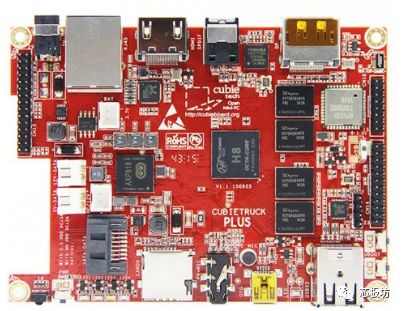
CubieBoard5’s core is also an 8-core processor, using Allwinner H8, which integrates 8 Cortex-A7 processors with a frequency of up to 2GHz. The GPU is SGX544, with a frequency of 700MHz. Memory specifications are 2GB DDR3.
CubieBoard5 is also a small motherboard that can be used as an HTPC. It comes with HDMI, USB, Gigabit Ethernet, WiFi, and Bluetooth. By the way, it also has a native SATA interface, allowing you to connect a mechanical hard drive directly to the board via a SATA cable without needing an external hard drive enclosure.
However, this board does not have USB 3.0, and the SATA interface is only 2.0. As an HTPC, there may be occasions where you suddenly need to copy dozens of GB of Blu-ray discs. At this time, I recommend the following board.
CubieBoard 7
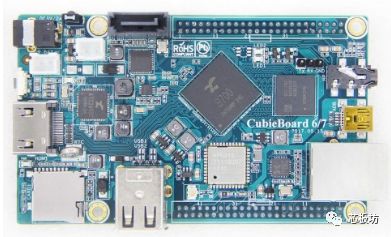
CubieBoard7’s CPU is the CubiTech Actions S700, a 4-core A53, with a Mali-450 MP4 GPU, 2GB DDR3 of memory, and 8GB eMMC flash storage. From the above photos, you can see that the size of the board has shrunk significantly compared to previous Cubie models, measuring only 100x60mm.
The highlight is the data interfaces, which provide SATA 3.0 and USB 3.0. The theoretical bandwidth of these two interfaces can reach 600MB per second. This configuration is certainly sufficient for use as a TV box; even copying a 40GB power supply can be completed in 10 minutes. It can also replace the Raspberry Pi 3B as a NAS server, with performance much better than that of the Raspberry Pi.
– Recommended Boards –
1. QianKe’s New IoT Embedded Wireless Wi-Fi Module
2. Privileged Student Altera Cyclone Development Board
3. Rock960 Six-Core 64-bit “Server-Level” Development Board
4. Allwinner H6 Quad-Core 1.8GHz Orange Pi 3
5. Intel Neural Compute Stick, compact size and low power consumption
